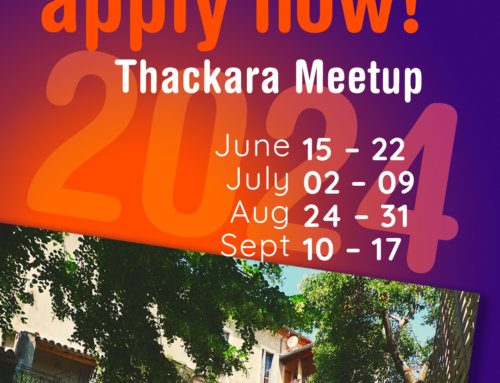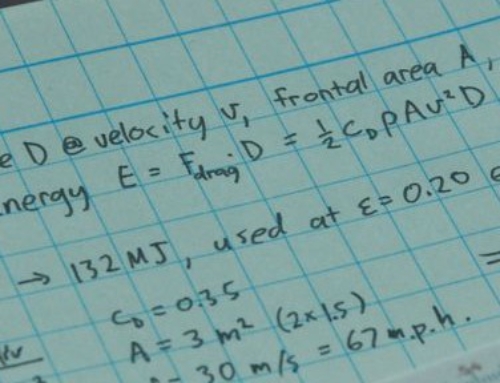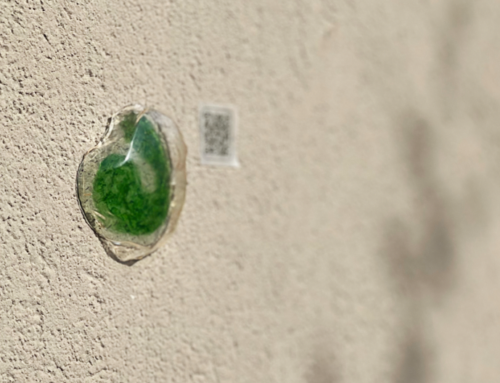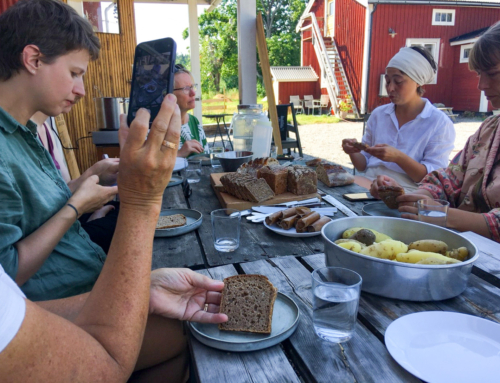My toughest work this year has been serving on the jury of this year’s Buckminster Fuller Challenge. Our work has been demanding because we’ve had to assess high quality entries that range from the use of social media to organize urban food systems, and transforming Chicago into a giant water treatment machine; to helping Indian women solar electrify their own villages, and the use of cattle to reverse the spread of deserts around the world.
But the experience has also been uplifting. As a jury, we were instructed to look for a “bold, visionary, but tangible initiative that addresses a well-defined need of critical importance” – and we have been spoiled for choice. Our winner, who will be announced on 2 June at the National Press Club in Washington DC, will receive a $100,000 prize to support the development and implementation of their work. I can’t be there myself, so my contribution is write about some of the finalists over the coming days and weeks – starting with….
Operation Hope
[Photo borrowed from Fast Company]
A quarter of the land area of Earth is turning into desert. Three quarters of the planet’s savannas and grasslands are degrading. And because the main activity on rangelands is grazing livestock, on which 70% of the world’s poorest people depend, grassland deterioration therefore causes widespread poverty.
All this impacts on climate change, too. According to Richard Douthwaite, who leads the Carbon Cycles and Sinks Network, agriculture and land-use emissions are 27% of global total of harmful emissions. [Douthwaite’s network is developing policies which will enable the Irish land mass to become a carbon sink rather than a source of greenhouse emissions. His organization, the Foundation for the Economics of Sustainability (Feasta) was instrumental in the invitation to Allan Savory to give a lecture at Trinity College, Dublin which may bee seen online here ]
Grassland degradation is not a new problem. Decay started when the first hominids discovered the tool of fire and, by burning grasses, destroyed nutrients that would otherwise have enriched the soil. But the rate of degredation has accelerated with the expansion of the human population.
Enormous research efforts have been made to understand and reverse desertification but, until recently, and with one remarkable exception, to no avail. That exception, Operation Hope, has transformed 6500 acres of of parched and degraded grasslands in Zimbabwe into lush pastures replete with ponds and flowing streams – even during periods of drought.
Surprisingly, this was accomplished through a dramatic increase in the number of herd animals on the land. Behind Operation Hope is an approach called holistic management which is applied to rangeland pratice. It has been developed over fifty years by Allan Savory, a former wildlife biologist, farmer, and politician. It takes pretty much the exact opposite approach to the dominant theory that desertification is caused by overgrazing.
Savory’s approach is based on a singular insight: grasses can’t graze themselves. Before man came along, herbivores co-evolved with perennial grasses. “When a large herd moved around freely – accompanied, that is, only by pack-hunting predators – they dunged and urinated with very high concentration on the grass. No animals like to feed on their own feces, so they had to move off of their own feces within 1-3 days and they could not return until the dung had weathered and was clean again”.
Moving across the land in large herds, the herbivores trample and compact soils in much the way that a gardener does to encourage plant growth – while also fertilizing the soil with concentrated levels of nutrient-rich animal wastes. This approach aligns itself with nature a comprehensive way; it increases plant growth and also re-establishes livelihoods through additional livestock, and increasing wildlife populations through holistic management.
Grasses depended on herbivores to help them with their decay process. When large herbivores such as Kudu and Cape Buffallo, disappear, grasses begin to decay far more slowly through oxidation. When millions of tons of vegetation are left standing, dying upright, the result is to block light from reaching growth buds; the next year, the entire plant dies. The death of grass leads to bare ground, and desert spreads.
Hooves, not tractors
Savory has not been wholly alone in his understanding of the importance of compacting on the health of vegetation. In the early 1970s, land grant universities in Texas and Arizona designed machines to simulate the physical effects of once prevalent vast herbivore herds – such as the millions of bison that roamed North America.
These machines, such as the Dixon Imprinter, were put into operation over thousands of acres of the western U.S to break soil crusts and cause indentations and irregularities while laying down plant material as soil-covering litter vital to soil health. Imprinting as the technique is called, is still practised.
But having observed observation of large wildlife herds close-up over more than fifty years, Allan Savory is convinced that animal hooves, mouths and digestive systems do this same task more effectively; the process can be repeated annually, and at no cost; and the process consumes no fossil fuels.
Large herbivores do three important things. They:
1. Break soil crusts: Trackers have observed this for thousands of years. The effect is more pronounced when animals are concentrated in large herds – which is how they behave when under threat from from pack hunting predators. The broken crust allows soil to absorb water and to breathe; this enables more plants to germinate and establish.
[Operation Hope runs livestock in a ‘predator-friendly manner’. Livestock are held every night in portable lion-proof corrals (known as kraals in southern Africa). The kraals are portable to prevent excess dung and urine becoming pollutants. “We do not kill the lions, leopards, hyenas, wild dogs or cheetah” says Savory; “they are present because they are crucial to keeping wildlife moving and thus the land healthy”].
2. Compact the soil under their hooves: “Anyone who has had a horse stand on their boot understands this” jests Savory. Compaction is required for good seed-to soil-contact, which increases germination. The need for compaction is why gardeners tamp down the soil around seedlings or seeds, or some farmers put a heavy roller over certain crops after planting.
3. Return standing grass plant material (dead or alive) to the soil surface earlier than the same plant material would have returned to the soil had the animals not been there. One has only to watch a cow or buffalo trample or dung to know this. (Which this writer will henceforth do).
In short, the conversion of plant material to litter or dung is essential to maintain biological decay. Machines designed to imitate animals cannot do this.
Time, not numbers
Seasonal rainfall grasslands require periodic disturbance for overall health. Savory also discovered that overgrazing was a function of time, not of animal numbers. For example, trampling for too long powders soil; this increases erosion by wind and water. Trampling for too long also causes compaction in deeper layers that is adverse to plant growth. And dung and urine, like most things in excess, become pollutants as feedlot animal producers soon learn.
But as Savory explains, “whether there is one cow or a thousand does not on its own determine the degree overgrazing; what changes the number of plants overgrazed is time – if the animal(s) remain too long in the same place, or return to it too soon following grazing”.
Graze/trample ratios
The holistic planned grazing practiced in Operation Hope is therefore based the application of high physical impact – trampling, dunging and urinating – in short periods, separated by much longer periods for plants and soil life to recover. The aim is to minimize overgrazing by maintaining a high graze/trample:recovery ratio on the land at all times – generally no more than three days grazing always followed by three to nine months of recovery.
Because they manage holistically, Operation Hope team herders do not apply abstract time regimes. They concentrate livestock over brief time periods either to break soil surfaces, compact soil to ensure seed germination or cycle annually dying plant material biologically and rapidly.
Savory’s use of increased livestock to reverse desertification runs against ten thousand years of agricultural development. “More than twenty civilizations have failed due to environmental degradation”, Savory reminds us, “and most of them had what people today would call sustainable, or organic agriculture!”
From green revolution, to brown
Savory’s work has far wider implications than desertification alone. His approach contains the elements of a new approach to agriculture.
The Green Revolution was based on high input, industrial agriculture. It involved massive inputs of petro-chemicals and herbicides, monoculture cropping, and confinement animal feeding operations. It increased global food production tremendously – but it has also tended severely to degrade its ecological and socio-cultural capital base in the process.
“The Green Revolution has not been characterized by ecological or social integrity—quite the contrary”. Charges Savory: “Horrific soil erosion, dead zones at the mouths of rivers, severely depleted levels of biodiversity, impoverished rural communities, soil fertility loss, and oxidation of soil organic matter – all these have been exacerbated by the Green Revolution”.
The good news, according to Savory, is that this can all be reversed – indeed, this is what Holistic Management practitioners have been engaged for the past 40 years. “We posit the necessity of a new ‘Brown Revolution’, based on the regeneration of covered, organically rich, biologically thriving soil, and brought to fruition via millions of human beings returning to the land and the production of food.
“Viewed holistically biodiversity loss, desertification, and climate change, are not three issues, they are one, he continues. “Without reversing desertification, climate change cannot adequately be addressed.
“The more humid and biologically productive regions of the world need to develop agricultural models based on small, biodiverse farms that imitate the natural, multi-tiered vegetation structures of those environments. This is where most of the grain, fruits, nuts, and vegetables will be produced, as well as most of the dairy products, and some of the meat”.
Wholes, not parts
Although Savory describes some of his insights as common sense, he has spent fifty years battling to make the scientific case for his approach, too. For most of this half-century, he has had to contend with intense opposition from maintream range science researchers ‘proving’ it does not work.
After fifty years during which the very idea of using increased livestock to reverse desertification has been rejected, a growing number of scientists now accept that the results claimed by Savory are supported by rigorous data, and that they therefore deserve to drive land use, agriculture, and development policy.
Savory’s acceptance by the mainstream is part of a profound shift in scientific thinking. He is no longer alone in realizing that transfers of energy and nutrients are innate to a ecosystem ecology. Savory’s concusions are confirmed by biological studies of plants, animals, terrestrial, aquatic, and marine ecosystems and, crucially, how they interact with each other.
This new approach to science has been called holism, or emergentism – the idea that things can have properties as a whole that are not explainable from the sum of the parts that reductionist science, at its crudest, studies in isolation.
The principle of holism was concisely summarized by Aristotle in the Metaphysics: “The whole is more than the sum of its parts”.
Jonathan Teller-Elsberg, a writer turning permaculture designer, explained to me why, in his view, Savory’s approach has resisted so long by the scientific mainstream. “Mainstream natural resource management systems were in essence designed to avoid or bypass complexity. They coined the term “best management practice” – but this was a a misnomer. What may be the right thing to do on a farm this year may not be next year – let alone on a different farm”.
Although their motive was good, complexity—social, environmental and economic—is the implacable reality for management and thus cannot be bypassed or avoided”, Teller-Elsberg continued. “It has to be embraced through holistic planning processes”.
Land is not linear
One of the obstacles Savory has encountered is the tendency of modern humans to make conscious decisions – planning and design, for example – in a linear way.
As individuals, we tend to be motivated a clear objective or goal. And in groups, we have created complex global organizations whose design is influenced by the same linear thinking. We manage these organizations by designing missions, or visions, that give the collective entity something to aim for in its (linear) journey forwards.
“We have been successful with developments of technology, but have failed over and over again to deal with complexity in nature and human society” says Savory. The trouble, he believes, stems from our attempts to control a world that is holistic, and fundamentally non-linear, in its makeup.
This rational, control-seeking approach makes it almost impossible to deal with such wicked problems as biodiversity loss, desertification, and climate change.
The limits of linear management are especially true of land. Says Savory: “the US enjoys the greatest concentration of scientists and wealth ever known in one nation – but she exports more eroding soil annually than all her other exports combined”.
Wealth = soil
The only wealth that can sustain any community or nation is derived from the photosynthetic process, he says. “Wealth, ultimately, means soil. And yet ever-larger farms are said to be ‘economic’ when this is simply not true. The US claims to be feeding the world when the true position is that the US farmers are bleeding the world with their topsoil losses”.
Land – whether rangeland or cropland – cannot be managed like the production line in a car factory. “Land alone is no more manageable than is the hydrogen or oxygen alone in water” says Savory.
Conversations, not plans
It follows from working in whole situations – when our actions are guided by complex realities, rather than by rational and abstract concepts – that what Savory terms the the “holistic goal” must change – continously.
Otherwise stated: conversations are more important than plans. In a healthy community, discussion of its holistic goals never ends. A healthy community does not aspire to create the perfect plan and then implement it; rather, the idea is to grow and develop holistic goals over time.
Each and every managed whole – people, land, money – is unique. Therefore, just as one cannot step into the same river twice because it is flowing, Holistic Management does not permit replication.
Savory traces many of his ideas back to 1924 when Jan Christian Smuts wrote Holism and Evolution’ “Smuts believed scientists would never understand nature until we understood that nature functioned in wholes and patterns of great complexity” recalls Savory; “unlike the mechanistic world view in which nature is viewed as a complicated machine with interconnecting parts. Savory is confident today that Buckminster Fuller’s thinking would have resonated with that of Smuts.
The issues raised by Operation Hope also resonate with a recent debate in the Transition Towns movement.Brian Davey, from Transiton Nottigham recently asked, “what constitutes a ‘plan’?”.
“A plan is a way of attempting to shape the future” writes Davey, “yet there is also an explicit ethos in the Transition Movement of ‘letting things go where they will’. ‘Letting things go where they will’ implies accepting that things will unfold in unexpected ways, and being flexible to that, taking up unforseen opportunities as they arise and being prepared to abandon unrealistic aspirations along the route.
“Instead of shaping the future, this is about being prepared to be shaped by the future”.
For Allan Savory, too, holistic management is about the means rather than the ends. The ends – the goals – are almost incidental. “You might even say that the means are the ends”, he reflects; “whatever you think your goal is, the true goal is to have a process for making decisions on an ongoing basis. After all, life is an endless, ongoing process. Any so-called goal is merely one step along an infinite path”.








